These Top 10 lowest cost gold mines are all below all-in-sustaining costs (AISC’s) $550/oz level and will prove profitable – even if the price falls 50%.
Mining Intelligence looked at costs at primary gold mines and found 10 operations that would still make money, even if gold halves in value from today’s levels. AISC metrics has been taken as a basis of comparison and ranking.
Since the World Gold Council (WGC) published a Guidance on AISC in June 2013, which introduced a transparent standardised production cost estimation metrics intended to be used commonly by the global gold industry, a majority – yet not all – of the leading publicly-trading gold producing companies successfully adopted WGC’s recommendations and implemented AISC to their official reports.
AISC metrics provide a more comprehensive look at mine economics than the traditional “cash costs” approach that many companies may interpret arbitrarily – and it includes such important expenses as overhead outlays and capital used in ongoing exploration, mine development and production.
With AISC being used as a benchmark of a company’s operating efficiency, it is becoming possible to compare more accurately the top publicly-traded and non-state-owned gold mining companies in terms of their production costs.
The following is a list of active gold operations across the globe, ranked by their average annual AISC report in 2017. The research focus was on primary gold operations, i.e. mines where gold contributed to 80% and more of revenues from operating activities generated last year. The ranking excludes tailings, re-processing operations, mines where the precious metal is produced as a by-product, and operations where companies report gold-equivalent output. Data was compiled from the Mining Intelligence database.
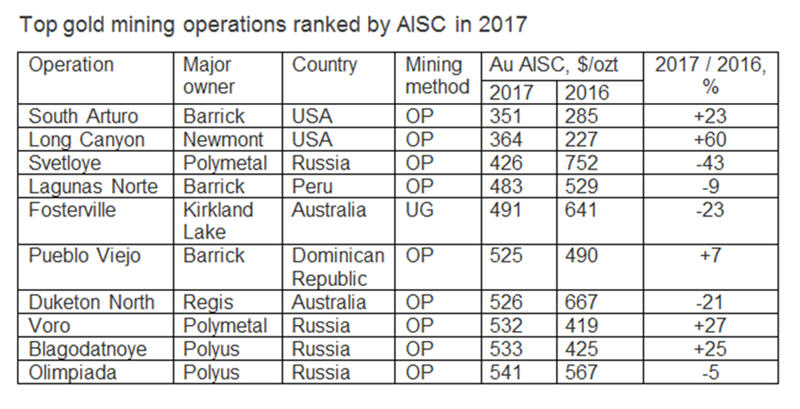
As indicated in the table above, new Nevada gold mines keep “rocking the boat,” and for the second year in a row are well ahead of other competitors in terms of AISC. Another observation is nine out of ten lowest cost gold operations are open-pit mines, of which five overall and first four in the ranking do employ a highly efficient heap leaching technology to treat their ores and produce gold.
South Arturo – $351/oz.
Barrick’s South Arturo open-pit gold mine is a high-grade oxide deposit amenable for highly efficient heap leaching mineral processing and extraction technology. This deposit is of the prominent Carlin-type widely known as being one of the most productive and cost efficient geological formations worldwide. Barrick processes South Arturo ore at its Goldstrike plant 5 kms south of the mine.
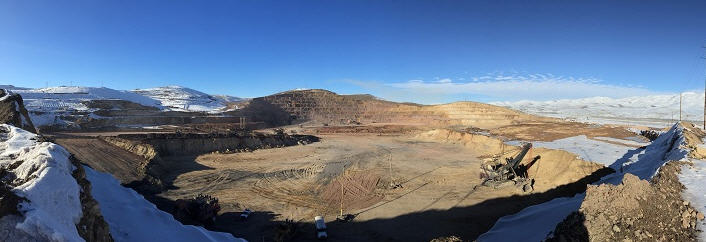
South Arturo gold mine – Image courtesy of Franco Nevada
Long Canyon – $364/oz.
Newmont’s Long Canyon mine is of the same mineralization style as the South Arturo deposit, and the only significant discovery made in Nevada in the last decade. The nature of the deposit, application of a heap leach technology and tapping into existing infrastructure keep costs at Long Canyon at some of the lowest levels in the industry.
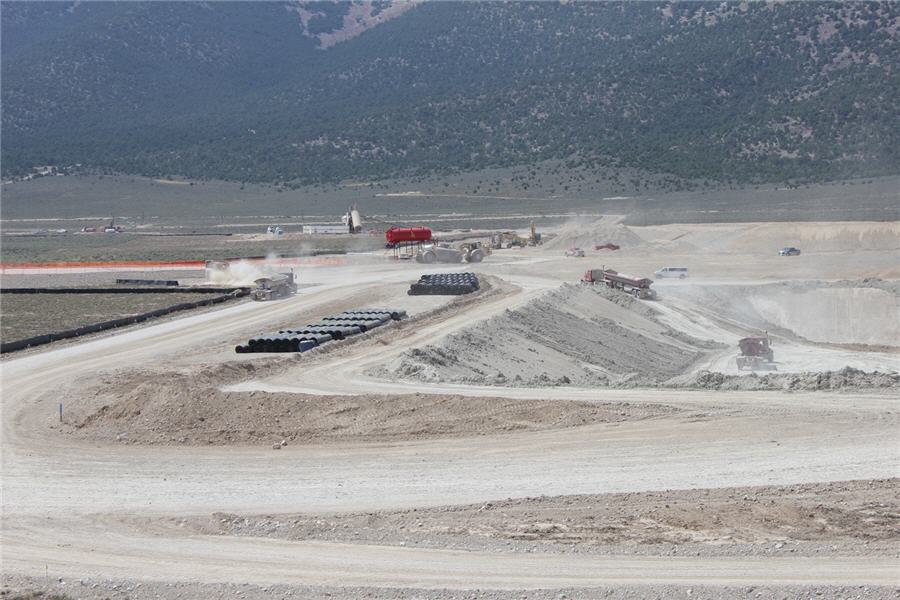
Newmont’s Long Canyon Mine
Svetloye – $426/oz.
Polymetal’s Svetloye mine is an open-pit gold operation that located in the far east region of Russia. Despite the remote location and lack of infrastructure, a high-grade ores and heap leaching technology help this mine to produce gold at the lowest costs possible.
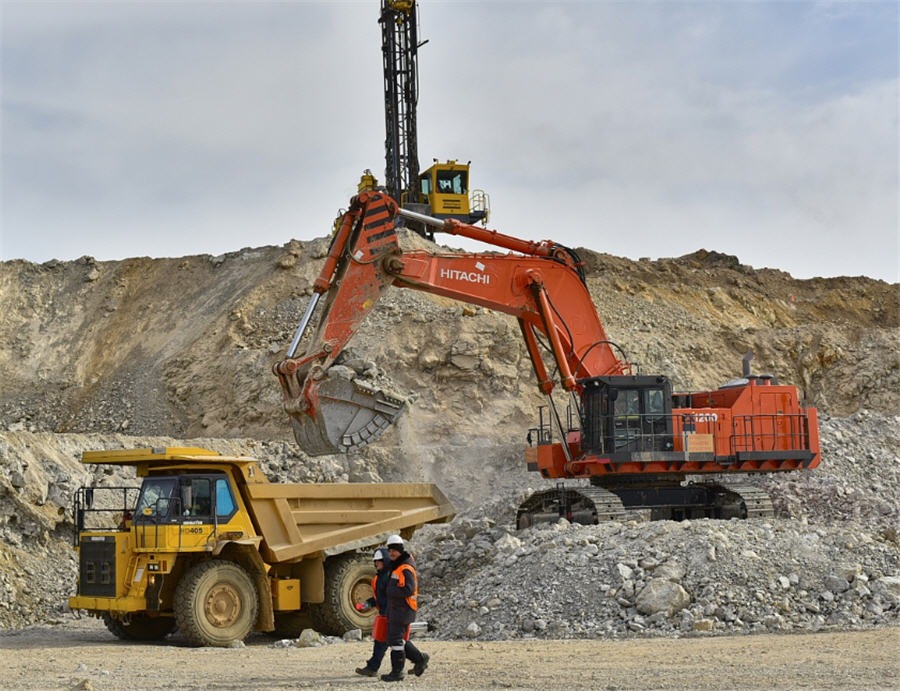
Svetloye mine – Image courtesy of Polymetal International Inc.
Lagunas Norte – $483/oz.
Barrick’s Lagunas Norte mine located in La Libertad region of Peru, 140 kms east of the coastal city of Trujillo. Lagunas Norte sits at an elevation of 4,000 to 4,260 meters above sea level. It’s an open-pit, valley-fill heap leach operation.
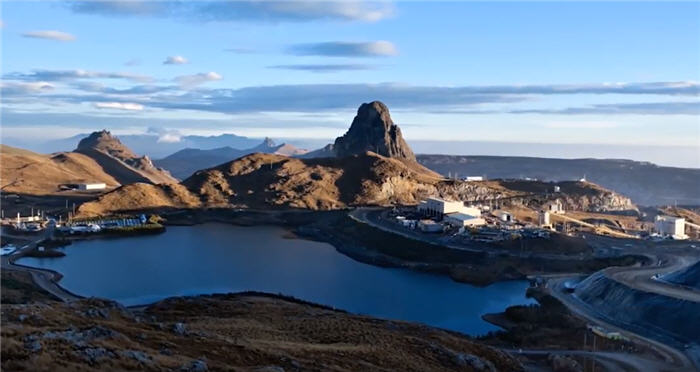
Lagunas Norte – Image from Barrick Gold Corp via Youtube
Fosterville – $491/oz.
In Q4 2017, Kirkland Lake Gold’s Fosterville Mine in Australia had the most impressive grade with 21.5 grams of gold per tonne of milled ore. Combined with an AISC of $491/oz, Fosterville is one of the world’s most remarkable underground gold mines right now. In 2017 it produced 263.8kozt of gold.
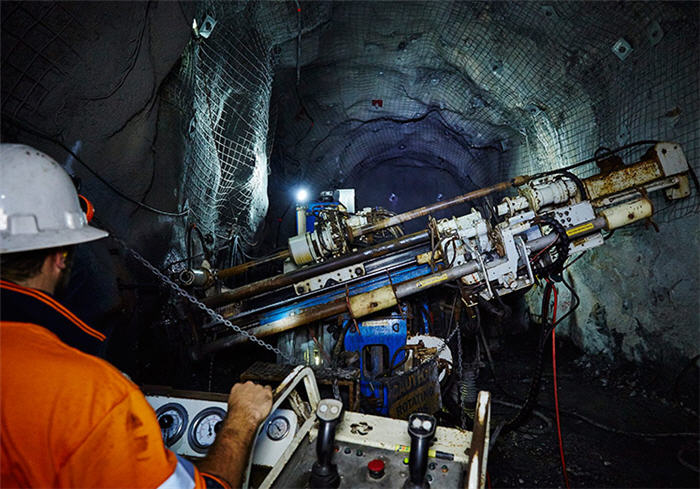
Fosterville mine – Image from Kirkland Lake Gold
Pueblo Viejo – $525/oz.
High-grade open-pit Pueblo Viejo gold mine is 60% – owned by Barrick and located in the Dominican Republic. This mine is one of the biggest in the world in both the volume of production and the size of reserves and resources.
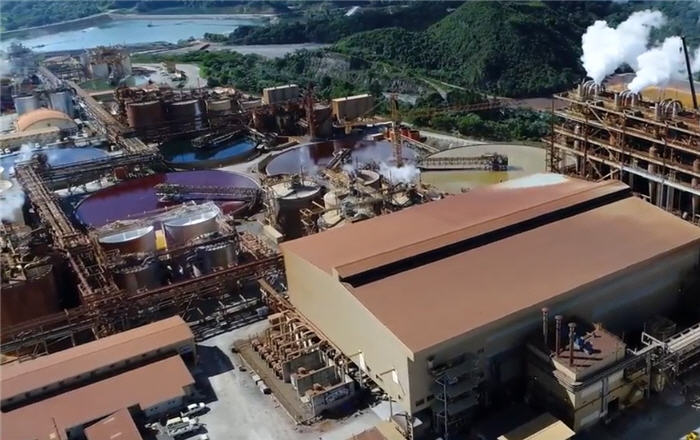
Pueblo Viejo – Image from Barrick Gold via Youtube
Duketon North – $526/oz.
Regis Resources’s Duketon North gold operation is just marginally behind the sixth-ranked Pueblo Viejo mine in terms of AISC. This mine is a large oxide gold deposit sitting within a deeply weathered Archaean ultramafic volcanic sequence that helps to produce gold in a cost-efficient manner.
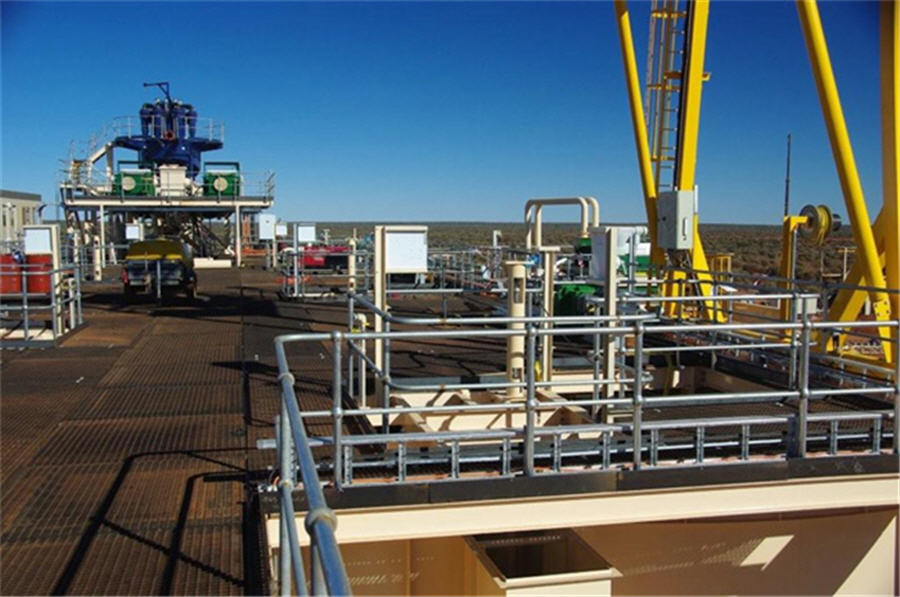
Duketon North gold mine – Image from Regis Resources
Voro – $532/oz.
Polymetal International’s Voro gold-silver mine and processing facility is located in the Sverdlovsk region of Russia. The opencast and heap leach operation started in 2000 and has another nine years of life.
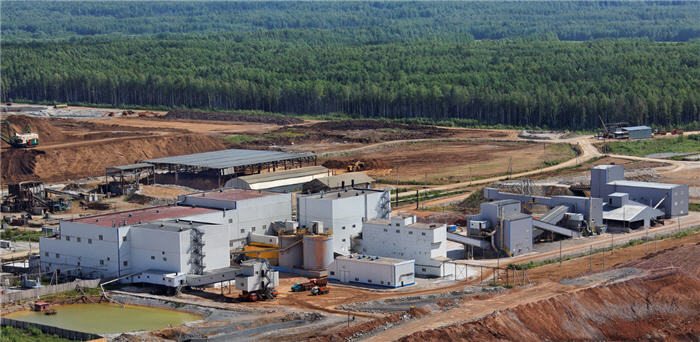
Voro mine – Image courtesy of Polymetal International Inc
Blagodatnoye – $533/oz.
Polyus Gold commissioned Blagodatnoye in Krasnoyarsk, eastern Siberia in July 2010. Processing capacity at the open pit, located 25kms from the Moscow-based company’s flagship Olimpiada mine, is 8.1 million tonnes of ore per year, which makes it one of the largest facilities of its kind in Russia.
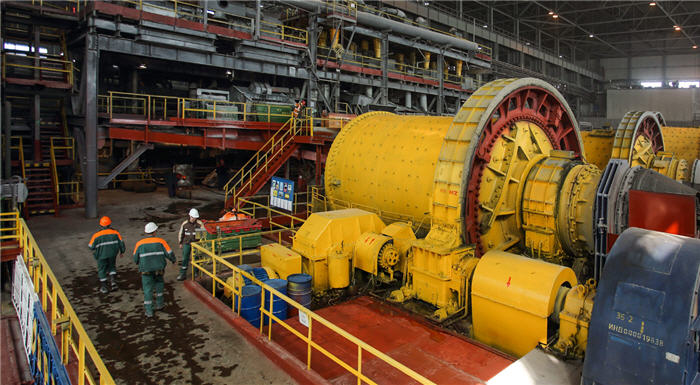
Blagodatnoye mine – Image courtesy of Polyus
Olimpiada – $541/oz.
Located in one of Russia’s most prolific gold mining provinces, Olimpiada is Polyus Gold’s largest operation. To treat Olimpiada’s sulphide ores, Polyus Gold employs BIONORD, the Company’s proprietary bio-oxidation technology. Successful exploration activities in the area indicate the potential for substantial extension of the life of this mine.
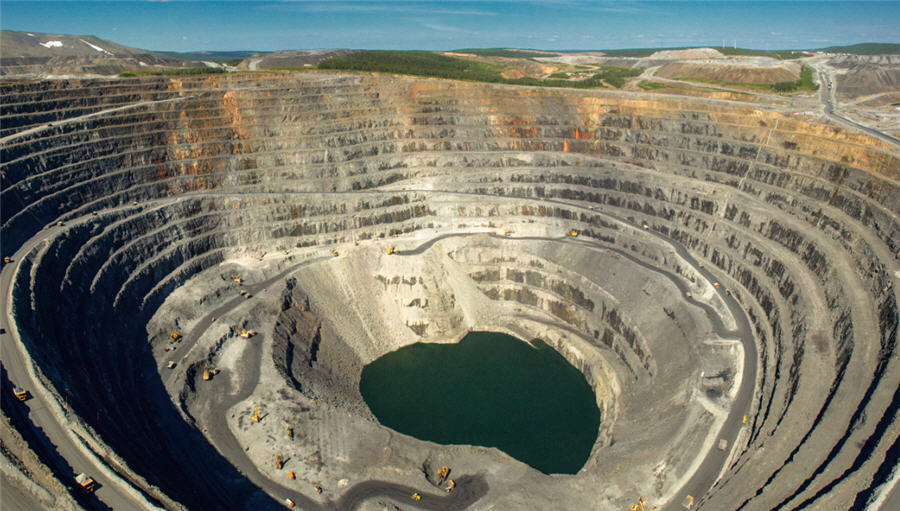
Olimpiada mine – Image courtesy of Polyus
The post These ten mines will make money – even if gold price falls to $550 appeared first on MINING.com.
Source: Mining.com



